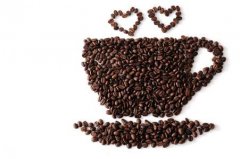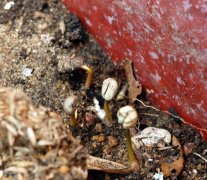The basic knowledge of espresso the common sense of ESPRESSO
Literally, "espresso" means "made on the spot after a customer orders", but when used in coffee, it changes from an adjective to a noun. It is a chemical and physical product. Professionally made espresso is made of dissolved sugar, caffeine and protein, oily and colloidal emulsions, suspended coffee particles and tiny bubbles. Vision (cheese-like foam or "crema" that stimulates taste buds) and smell play an important role in the final judgment, with more than 600 chemicals included in each different mix. Aroma and taste are included.

A perfect espresso relies on the density of "crema" (foam) to retain calories and aroma for a short while of making and drinking.
The best mix is a mixture of several types of coffee from different parts of the world. Blending is specially designed for use on espresso machines, typically medium to deep baked beans, which may contain 5, 6 or more varieties of origin.
The blending of pure Arabicas-from multiple sources-is softer and more aromatic, but the combination of Arabicas and Robustas is more textured and has a stronger flavor.
Although the concentration of caffeine is high (about 80-85% extracted), a good espresso contains no more caffeine than other filtered coffee because the contact time between water and coffee is shorter.
Tasting experts at Lavazza have created a range of blended coffees. With their years of experience, a precise proportion has been determined for each match.
The coffee beans are packaged immediately after baking, and the carbon dioxide produced by the baking process (90% of the gas is produced at this stage) gradually spreads in the remaining space of the bag, and the pressure increases, causing the bag to burst. To avoid this, glue a valve to the bag so that carbon dioxide can be discharged, but prevent oxygen from entering.
Roasted coffee is perishable and should be prevented from contact with light, moisture, especially oxygen in the air. These substances will change the taste and flavor of beans, and the characteristics of coffee will decline when the essential oily ingredients in coffee come into contact with light or oxygen. When this happens, oxidation occurs, and the unpleasant, rotten smell will outweigh the natural aroma of the coffee itself.
Decaffeinated coffee
Many of the effects of coffee on our body functions are mainly caused by the caffeine it contains. A small cup of coffee contains 50-150 milligrams of this alkaloid. A scientist named Ludwig Raselius uses steam to infiltrate coffee beans. Caffeine is released through porosity and can be easily extracted with an organic solution.
It should be noted that the term "decaf" has strict legislative provisions to ensure compliance with many legal restrictions. These rules specify not only raw coffee beans, but also the percentage of caffeine allowed to make coffee. Every caffeine removal method must comply with EC regulations, and caffeine in raw coffee beans must be reduced to less than 0.1%.
Important Notice :
前街咖啡 FrontStreet Coffee has moved to new addredd:
FrontStreet Coffee Address: 315,Donghua East Road,GuangZhou
Tel:020 38364473
- Prev

The basic knowledge of coffee beans the harvest time and treatment of coffee beans
Harvesting and handling harvests take place in different months of the year (depending on the geographical location of the producing country), depending on the maturity of the fruit. The harvest time depends on the geographical location, climate and altitude, and varies according to the situation of each producing country. Ripe fruit can be picked by hand, or raked with a small rake, or hit to the ground with a pole: the first two ways can use low-cost labor
- Next

The growth process of coffee trees
The bud that has just emerged looks like it is ready to bloom. The seed next to the beginning of the newborn life has already sprouted, two beautiful young leaves, the small bud next to it needs refueling, it will sprout and grow leaves soon. Now the bud is not high, it is estimated to be only five or six centimeters.
Related
- Beginners will see the "Coffee pull flower" guide!
- What is the difference between ice blog purified milk and ordinary milk coffee?
- Why is the Philippines the largest producer of crops in Liberia?
- For coffee extraction, should the fine powder be retained?
- How does extracted espresso fill pressed powder? How much strength does it take to press the powder?
- How to make jasmine cold extract coffee? Is the jasmine + latte good?
- Will this little toy really make the coffee taste better? How does Lily Drip affect coffee extraction?
- Will the action of slapping the filter cup also affect coffee extraction?
- What's the difference between powder-to-water ratio and powder-to-liquid ratio?
- What is the Ethiopian local species? What does it have to do with Heirloom native species?

